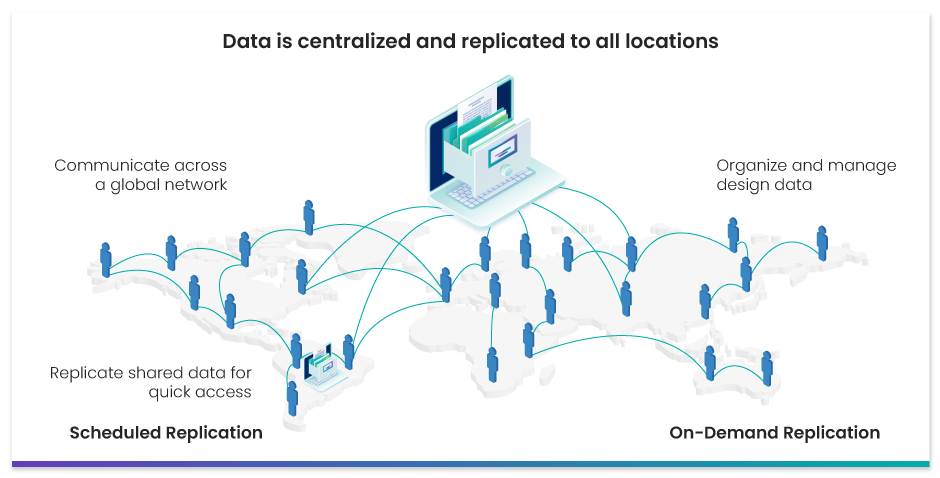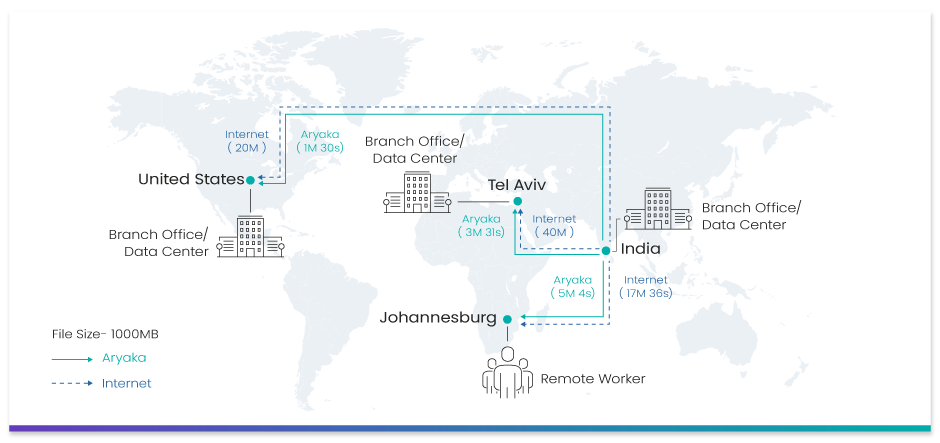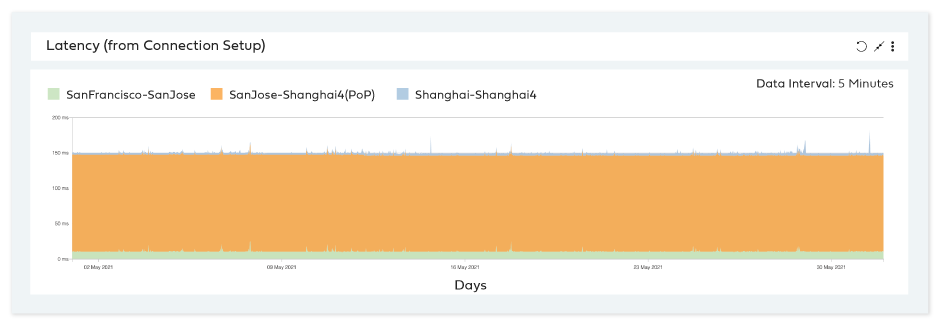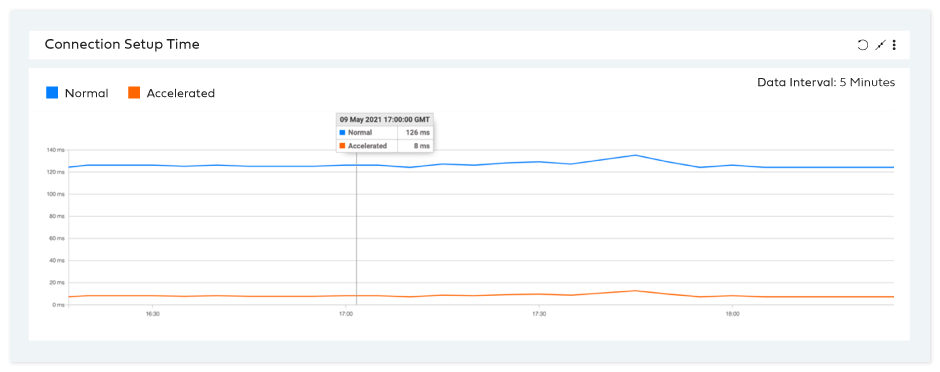
Hailed as the primary design tool of choice for most organizations and almost 70% of engineering schools and universities, the SolidWorks family of 3D CAD applications boasts a powerful suite of tools that businesses lean on to meet their 3D modelling needs.
From 2D drawings and detailed 3D modelling to conceptual modelling, design animation, and automation, SolidWorks stands apart from the horde of other CAD tools and holds a significant share of the CAD market.
With the launch of SolidWorks 2017, the company has further bolstered its efforts to provide a simplified user experience and add new capabilities for improved collaboration. However, when your engineering team in Shanghai collaborates with the design team in the Netherlands, there is one eminent piece that the entire partnership rides upon, the network.

Enterprises rely on CAD/CAM (Computer-Aided Design/ Manufacturing) applications such as Solidworks for collaboration between design, engineering, and project teams. While the application works flawlessly over the LAN, performance is inversely proportional with distance, such as when used in a WAN environment.
However, sharing and collaborating large CAD documents with a globally dispersed team is a competitive necessity for most enterprises. The more globalized the company is, the more distributed the teams become.
For example, an architectural firm in California might be working on designs for an under-construction building in Germany. Meanwhile, specialty parts will need to be acquired from an office in China. The average response time for a 1000 MB file to travel from India to San Jose is approximately 20 minutes. Poor file transfer times not only affect the end-user performance but also bog down productivity. Tasks such as editing remote CAD files or uploading local ones seem impossible if the branch offices are located in remote global locations.

The performance degradation over long distances is just the tip of the iceberg. The traditional routing and peering practices of the ISPs just do not cut it in a site-to-site deployment scenario. Then there is the problem of packet loss that serves as the breeding ground for multiple other performance degrading elements.
While some may think pumping more bandwidth may be a potential solution, it does little to address packet loss, latency, and other issues. MPLS could help, but then again, hefty costs, lengthy deployment timelines, and zero optimization benefits are a deal-breaker, given the dynamic nature of the requirement.
Aryaka delivers networking and security-as-a-service via a fully managed SD-WAN and SASE architecture. Our Services PoP-based architecture is purpose-built for transferring large sized CAD files between globally dispersed users and road-warriors. It lets users connect to their data repository instances in as fast as 30 milliseconds – securely, from anywhere in the world. The PoPs connect to the service edge, interconnect via a dedicated L2 mesh, and when combined with our global orchestration, operate as a well-integrated machine that ties together your connectivity, security, optimization, and cloud with no blind spots.
The in-built intelligence and optimization is just what the users need to run data intensive applications such as SolidWorks. With the click of a button, Aryaka can prioritize the SolidWorks traffic for a seamless experience. The turbo-charged network ensures ample optimization to make sure that the application performance and user experience don’t take a hit even when multiple users are accessing the same file or simultaneously working on it.

With Aryaka’s Cloud-First WAN, CAD/CAM applications can run up to 20x faster — even in the most remote corners of the world. SolidWorks performance benefits from a global private network that eliminates the need for backhauling and mitigates single choke points. The built-in optimization and resiliency combined with guaranteed stable core latency ensures lightning-fast connectivity and zero congestion between sites, data centers, and application instances. Below are real performance improvements experienced by a site exchanging CAD data between San Francisco and Bangkok.



| Global Private Network | Leverages a software-defined, private network, with no MPLS, that bypasses the congested public internet for fast, reliable, and predictable connectivity. |
| SASE | Aryaka’s approach to SASE combines leading network and security functionality as a cloud-first service to deliver on an architecture that is optimally tailored to the architectural and regulatory needs of any enterprise. |
| SD-WAN Technology | Simplifies the WAN, improves traffic flows, and ensures QoS, configuration accuracy, resilience, failover, and scalability. |
| Application Acceleration | Improves performance of CAD/CAM applications with TCP and WAN Optimization capabilities built into the network. |
| Fully Managed Network-as-a-Service | Delivers 24×7 expert network monitoring and management to ensure performance and quality link connections. |
| Multi-Cloud Connectivity | Access cloud applications seamlessly with direct connectivity to and between IaaS, PaaS, and SaaS platforms. |
| Network Visibility Portal | Provides a real-time 360-degree view of all network traffic and applications end-to-end. |
Aryaka is the leader in delivering Unified SASE as a Service, a fully integrated solution combining networking, security, and observability. Built for the demands of Generative AI as well as today’s multi-cloud hybrid world, Aryaka enables enterprises to transform their secure networking to deliver uncompromised performance, agility, simplicity, and security. Aryaka’s flexible delivery options empower businesses to choose their preferred approach for implementation and management. Hundreds of global enterprises, including several in the Fortune 100, depend on Aryaka for their secure networking solutions. For more on Aryaka, please visit www.aryaka.com.